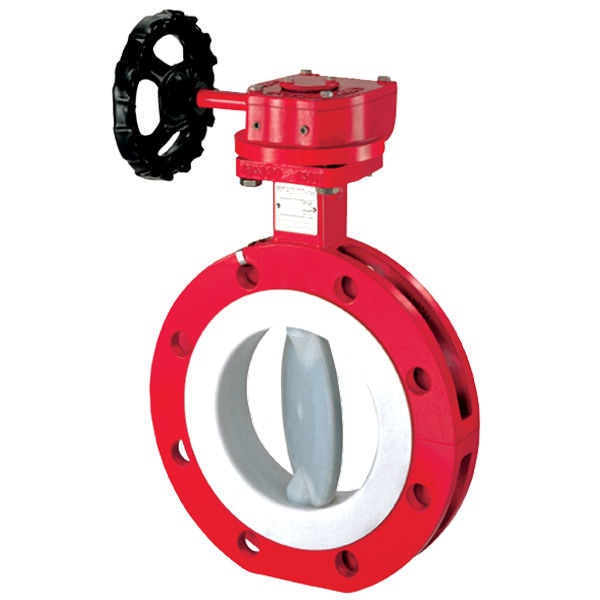Butterfly valves are a critical component in the pharmaceutical industry, playing a vital role in controlling the flow of fluids in pipelines. But what is butterfly valve used for? In this blog, we will explore the various types of butterfly valves, their features, and their applications in the pharmaceutical industry.
Understanding Butterfly Valves
A butterfly valve is a type of flow control device that uses a rotating disc to regulate the flow of fluids. The disc is mounted on a rod and can be turned to open or close the valve. Butterfly valves are essential for controlling the flow of fluids in pipelines, particularly in the pharmaceutical industry, where hygiene and precision are paramount.
In the pharmaceutical industry, butterfly valves are used in a variety of applications, including:- Drug manufacturing: Butterfly valves are used to control the flow of fluids in drug manufacturing processes. They are also used to isolate and clean equipment and pipelines.
- Sterile processes: Butterfly valves are used in sterile processes such as the filling and packaging of pharmaceutical products. They are designed to prevent contamination and ensure the safety of the products.
- Cleanrooms: Butterfly valves are used in cleanrooms, which are areas where there are strict controls on the level of contamination. They are designed to prevent the introduction of contaminants into the cleanroom environment.
Types of Butterfly Valves
There are several types of butterfly valves commonly used in the pharmaceutical industry, including concentric, double-offset, and triple-offset. Let’s take a look at what are the types of butterfly valves?
- Concentric butterfly valves: Concentric butterfly valves are the most common type of butterfly valve. They are simple to operate and have a wide range of flow rates. Concentric butterfly valves are often used in drug manufacturing and sterile processes.
- Double-offset butterfly valves: Double-offset butterfly valves are designed to reduce the amount of torque required to operate the valve. This makes them ideal for applications where space is limited or where the valve is frequently operated. Double-offset butterfly valves are often used in cleanrooms.
- Triple-offset butterfly valves: Triple-offset butterfly valves are the most precise type of butterfly valve. They are used in applications where there is a need for accurate flow control. Triple-offset butterfly valves are often used in research and development laboratories.
Features of Butterfly Valves
Butterfly valves have several key features that make them ideal for pharmaceutical processes. Butterfly valves are also compact and lightweight, making them easy to install and operate. The features of butterfly valves make them ideal for pharmaceutical processes. Let’s take a look at what are the features of butterfly valve?
- Smooth, crevice-free sealing surfaces: This helps to prevent the buildup of product and bacterial growth.
- Corrosion-resistant materials: This helps prevent the valve from corroding and contaminating the product.
- Easy cleaning and maintenance: This helps to ensure the sanitary and hygienic operation of the valve.
- Actuation options: Butterfly valves are available with a variety of actuation options, including manual, pneumatic, and electric. This makes them versatile and adaptable to a wide range of applications.
Applications in the Pharmaceutical Industry
Butterfly valves are widely used in the pharmaceutical industry due to their ability to control the flow of liquids or gases. They are particularly popular because of their lightweight, fast operation, and low costs. Here are some specific uses of butterfly valves in the pharmaceutical industry:
Refined Drugs: Butterfly valves are mainly used for refined drugs, washing and other processes in the bottle, ingredients, and other processes for pharmaceutical water manufacturers. Transfer of Materials: They are used in pharmaceutical processes to control the flow of liquids or gases, such as the transfer of raw materials, intermediates, and finished products. High Containment Valves: More and more new drugs contain high-potency active pharmaceutical ingredients (APIs), which require careful handling and specialised equipment. Here, valves offer a cost-effective solution and offer insight into the best sealing material for containment processes. Hygiene: Butterfly valves are designed to be used in the pharmaceutical and food industries, where hygiene is essential. Benefits of Butterfly Valves The use of butterfly valves in the pharmaceutical industry offers several benefits. These include:- Low maintenance: Butterfly valves are relatively low-maintenance valves. They do not require frequent lubrication or adjustments.
- Minimal leakage: Butterfly valves are designed to minimise leakage. This is important in the pharmaceutical industry, where even small amounts of contamination can be harmful.
- Ease of automation: Butterfly valves can be easily automated, which can improve process efficiency.
- Versatility: Butterfly valves are available in a variety of sizes and materials, making them suitable for a wide range of applications.
- Cost-effectiveness: Butterfly valves are a cost-effective option for many pharmaceutical applications.
- Improved process efficiency: Butterfly valves can help improve process efficiency by minimising leakage and providing accurate flow control.
- Increased safety: Butterfly valves can help increase safety by preventing contamination and ensuring the sanitary operation of the process.
- Reduced maintenance costs: Butterfly valves are relatively low-maintenance valves, which can help reduce maintenance costs.
- Cost-effectiveness: Butterfly valves are a cost-effective option for many pharmaceutical applications.
Butterfly valves prove highly beneficial in the pharmaceutical sector, serving a crucial role in fluid control and hygiene maintenance. Whether you’re engaged in pharmaceutical manufacturing or operating cleanrooms, these valves can enhance processes and yield improved outcomes. If you wish to delve deeper into butterfly valves and their pharmaceutical applications, consider consulting experts or conducting further research. They offer reliability, low maintenance, and ease of use, making them valuable assets for ensuring pharmaceutical product safety and quality.
